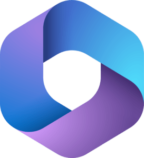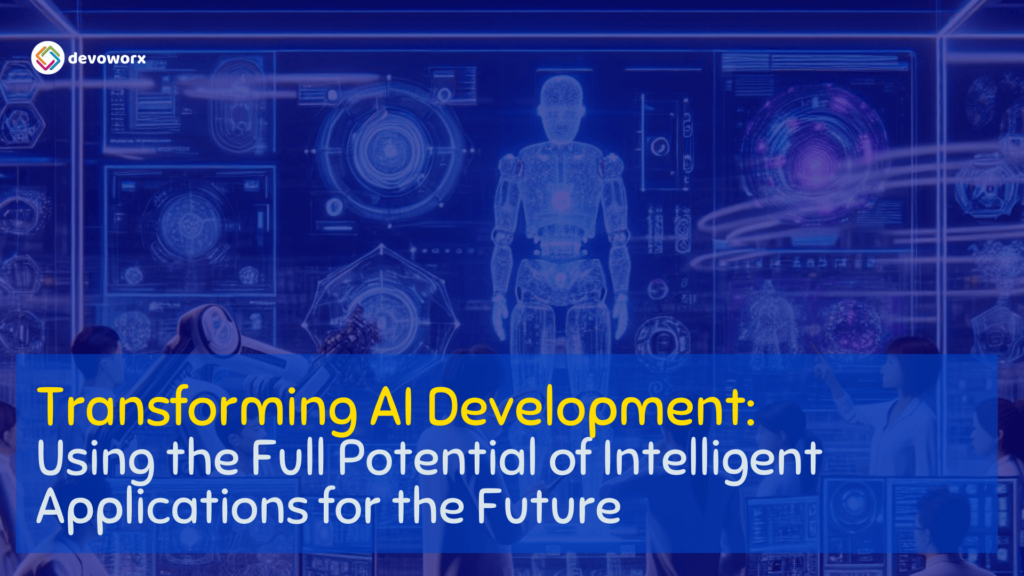The transformative potential of artificial intelligence (AI) is revolutionizing industries and redefining how applications are developed, deployed, and used. From enhancing existing applications with intelligent features to creating entirely new solutions, AI is empowering developers to build innovative tools that address complex challenges.
This guide explores the evolution of AI development, highlighting key trends, tools, and best practices to integrate AI seamlessly into modern development processes.
- 1 Every App Will Be Reinvented with AI
- 2 Accelerating the Development of AI-Driven Applications
- 3 The Journey from AI Experimentation to GenAI Production
- 4 The World’s Most Loved Developer Tools
- 5 De-Mystifying AI Development
- 6 The Way We Write Code is Changing
- 7 The Copilot & AI Stack
- 8 Announcing Azure AI Foundry
Every App Will Be Reinvented with AI
AI is fundamentally changing the way applications operate. Existing apps are being augmented with AI-driven insights, automation, and creative capabilities, while new applications solve previously unsolvable problems.
Developers and organizations are at the forefront of this change, using AI to:
- Automate intricate processes.
- Provide predictive analytics.
- Deliver enhanced user experiences.
This transformation goes beyond traditional development, creating smarter, adaptive applications that meet the growing demands of users and industries alike.
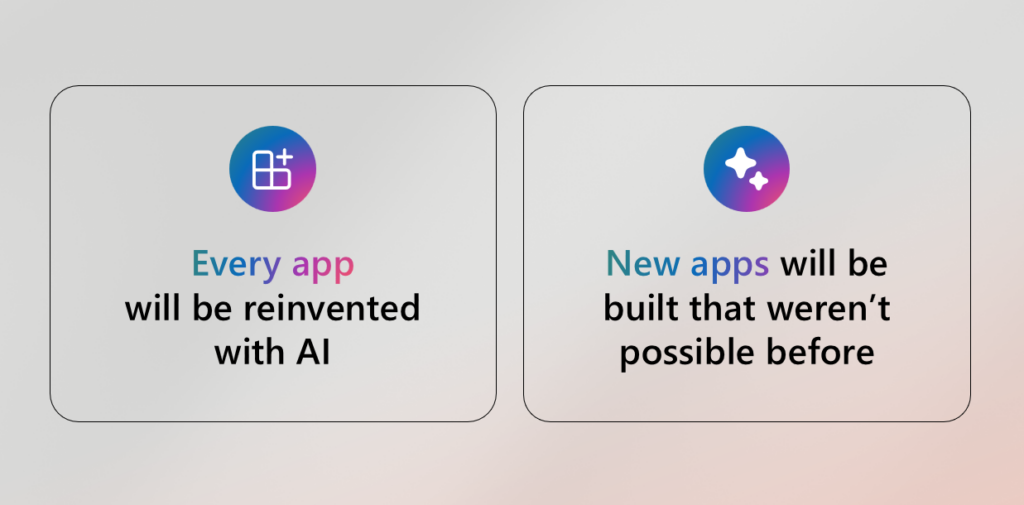
Accelerating the Development of AI-Driven Applications
The adoption of AI is accelerating at an unprecedented pace, driven by the need for more intelligent, adaptive applications. Three key trends exemplify this growth:
1B New Applications in the Next 24-36 Months
Advancements in AI technology are fueling an estimated surge of 1 billion new applications over the next two to three years. These apps will address diverse use cases, including:
- Finance: Fraud detection and risk analysis.
- Healthcare: AI for diagnostics and patient care.
- Retail: Personalized shopping experiences.
70% of Organizations Accelerating App Modernization
To stay competitive, 70% of organizations are modernizing legacy systems by embedding AI-powered features. These efforts aim to:
- Adapt to market demands.
- Improve decision-making processes.
- Enhance operational efficiency.
90% of Developers Embracing AI in Their Toolset
AI is now integral to the developer workflow, with 90% of developers leveraging AI for:
- Accelerating the overall development cycle.
- Automating repetitive tasks.
- Generating predictive models.
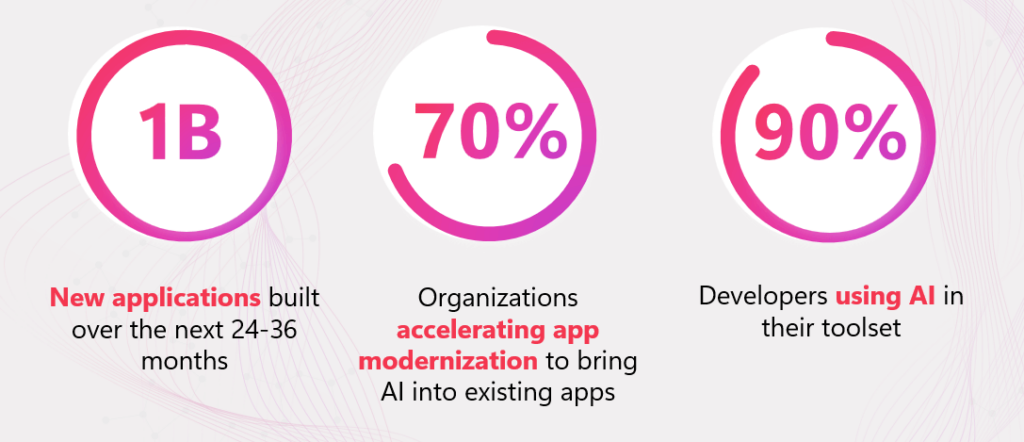
Sources: 1 Billion New Logical Applications: More Background.
The Journey from AI Experimentation to GenAI Production
The journey from an AI Proof of Concept (PoC) to production is challenging, with only 14% of organizations successfully making the transition. This highlights the need for addressing scalability, and integration challenges and ensuring sufficient resources and expertise are in place to move from experimentation to full-scale deployment.
A large majority of organizations, 74%, are still in the planning or experimentation phase with Generative AI (GenAI). While many are exploring its potential, they have yet to make significant progress in full-scale implementation. This stage is crucial for developing proof of concepts, evaluating potential use cases, and assessing the readiness for production deployment.
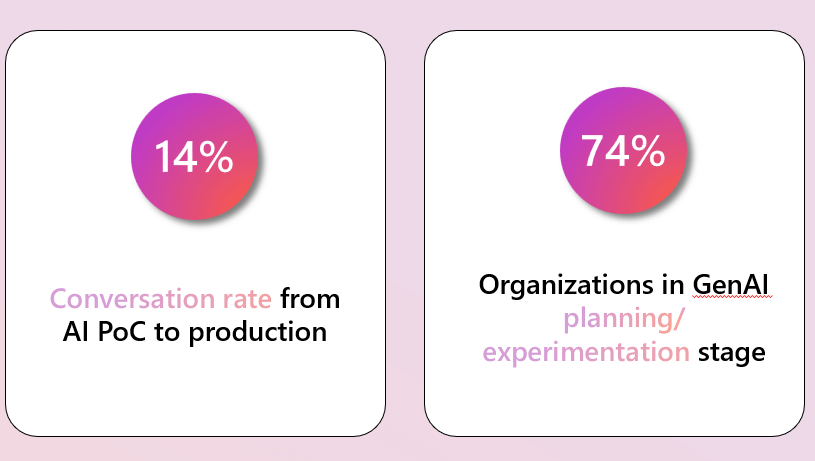
Factors Hindering GenAI Production
Several factors play a crucial role in hindering the widespread adoption and success of Generative AI (GenAI) in production environments:
- 41% Lack of Developer Skills and Tools
A significant barrier to GenAI production is the shortage of developers with the necessary skills and tools to build, deploy, and maintain these systems. This skill gap affects the ability to innovate and scale GenAI solutions effectively. - 38% Excessive Costs Outstripping ROI Goals
The high costs associated with developing and maintaining GenAI models are another factor limiting their adoption. Organizations struggle to balance the expenses with the expected return on investment (ROI), which often leads to delayed or halted projects. - 36% Infrastructure Performance and Availability
Ensuring that the infrastructure required for GenAI models performs optimally and is available when needed is a crucial challenge. Poor performance or inadequate infrastructure can lead to bottlenecks and inefficiencies in deploying GenAI at scale. - 35% Poor IT and Business Coordination
A lack of coordination between IT teams and business units hampers the successful implementation of GenAI solutions. Clear communication, alignment of goals, and collaboration between these teams are critical for overcoming obstacles and ensuring that GenAI solutions meet business needs effectively.
The World’s Most Loved Developer Tools
The landscape of software development is constantly evolving, and a few tools have gained massive popularity due to their powerful features and ability to simplify complex workflows. Among these, three stand out as the most loved by developers worldwide:
Visual Studio
Visual Studio is a comprehensive and feature-rich integrated development environment (IDE) that has been a go-to for developers working on a wide range of applications. With support for multiple programming languages, powerful debugging tools, and extensive extensions, Visual Studio has earned its place as one of the most loved developer tools.
GitHub
GitHub has revolutionized version control and collaborative coding. With its seamless integration with Git, intuitive user interface, and vast repository of open-source projects, GitHub has become the platform of choice for developers to share, collaborate, and manage codebases. Its community-driven model fosters collaboration and innovation on a global scale.
Copilot Studio
Copilot Studio, powered by OpenAI’s language model, assists developers by offering AI-driven code suggestions, helping to speed up development and reduce coding errors. With its intelligent code completion, contextual suggestions, and ability to understand developer intent, Copilot Studio is transforming how developers write code, making it one of the most sought-after tools in the industry.
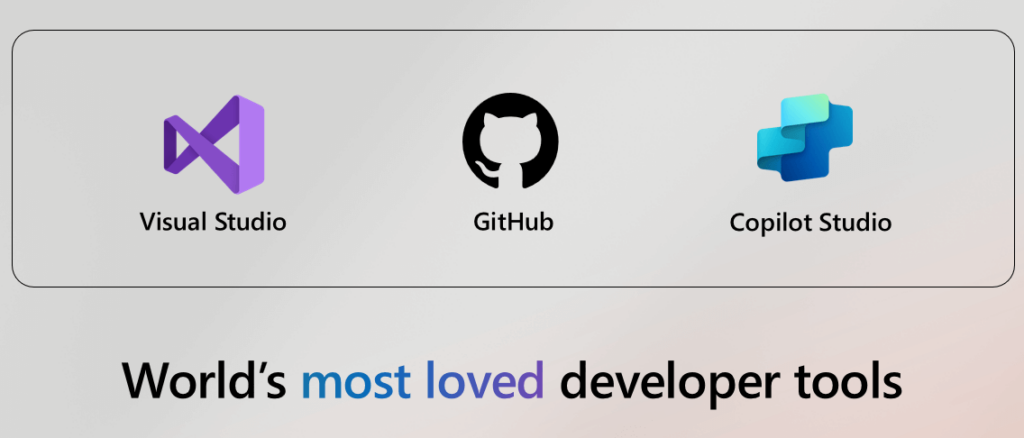
De-Mystifying AI Development
AI development has shifted from being an expert-only domain to a more accessible discipline. Developers now adopt probabilistic approaches, moving beyond traditional deterministic methods. This paradigm shift enables the creation of dynamic systems that generate outputs based on context and user interactions.
At a basic level
- Providing prompt to a model
- Acting on the response

At Scale
- Holding many different conversations with models & agents
- Extracting information into useful results

The Way We Write Code is Changing
The evolution of software development is shifting from traditional deterministic approaches to more dynamic, probabilistic methods. This transformation is reshaping how we write code, build features, and test applications.
Let’s explore the key differences between the two paradigms:
Deterministic vs. Probabilistic Development
| Aspect | Deterministic | Probabilistic |
|---|---|---|
| Code Writing | Manually writing explicit code. | Using AI to generate code from prompts. |
| Feature Building | Developing predefined features. | Creating intelligent agents that adapt. |
| Testing | Conducting rigid, structured tests. | Evaluating real-world performance and adaptability. |
From Deterministic to Probabilistic Development (In Depth)
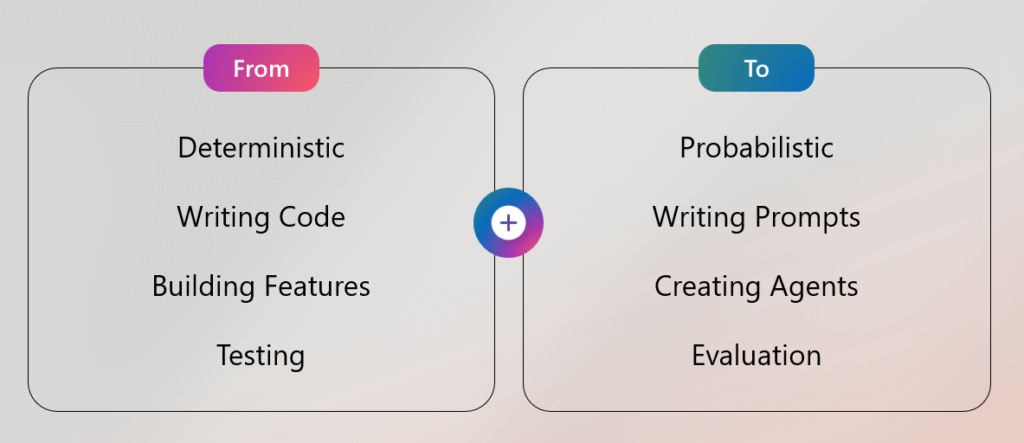
Deterministic: Writing Code
In the traditional approach, developers write explicit code that follows strict rules and instructions. This process is highly structured and predictable, where each line of code leads to a defined outcome.
Probabilistic: Writing Prompts
With the rise of AI-powered tools, writing code is becoming more about providing prompts or instructions rather than detailing every step. AI models analyze these prompts and generate code based on patterns and past data, introducing an element of unpredictability in the output.
Deterministic: Building Features
Developers build features by writing specific code to perform predefined tasks. The focus is on meeting exact specifications, ensuring that features work as expected within the given parameters.
Probabilistic: Creating Agents
Rather than building features directly, developers are now creating intelligent agents—systems that can learn, adapt, and evolve. These agents are capable of autonomously handling tasks and making decisions, offering more flexible and scalable solutions to complex problems.
Deterministic: Testing
In the deterministic approach, testing is structured and fixed, focusing on checking if the code performs exactly as expected. Developers write unit tests, conduct integration tests, and ensure every function works under defined conditions.
Probabilistic: Evaluation
With the probabilistic approach, testing becomes more about evaluation. Instead of rigid test cases, developers evaluate the system’s performance in real-world scenarios, often relying on AI tools to assess efficiency, accuracy, and adaptability over time.
This transition fosters a more dynamic and efficient software development process, powered by AI tools.
The Copilot & AI Stack
The Copilot & AI Stack is not just a toolset but a catalyst for innovation, enabling developers to push the boundaries of what’s possible. By democratizing AI-powered development and making cutting-edge technologies accessible, this stack is setting the stage for a new era in software engineering.
The Copilot & AI Stack offers a cohesive environment for developers to:
- Access development tools like Visual Studio, Copilot Studio, and GitHub.
- Manage data and models efficiently using Azure AI Foundry.
- Experiment with function calling and model integration to accelerate application development.
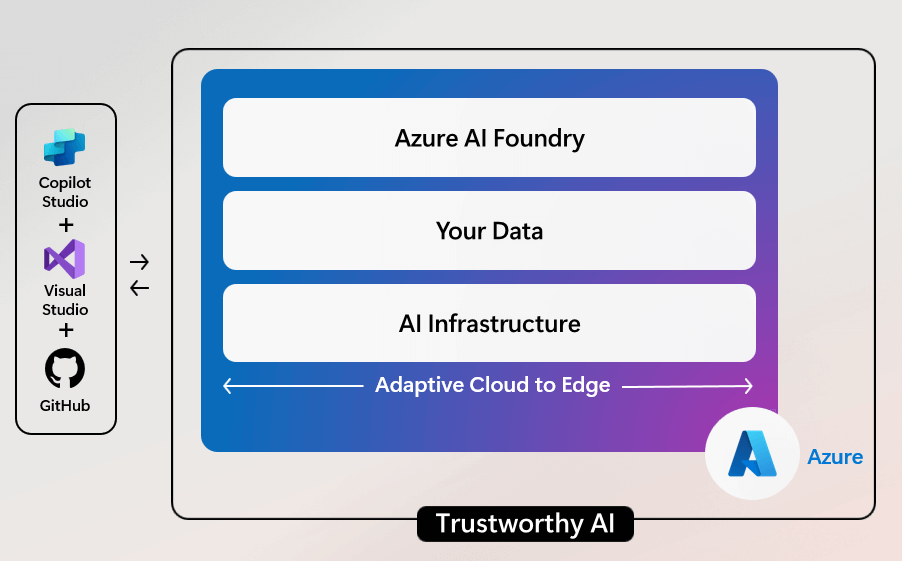
Start Small, Iterate, and Scale
A key principle in AI development is to start small and grow iteratively. Developers begin by building proof-of-concepts, transitioning to production by:
- Validating ideas with small datasets.
- Incorporating real-world feedback.
- Continuously analyzing user interactions to optimize applications.
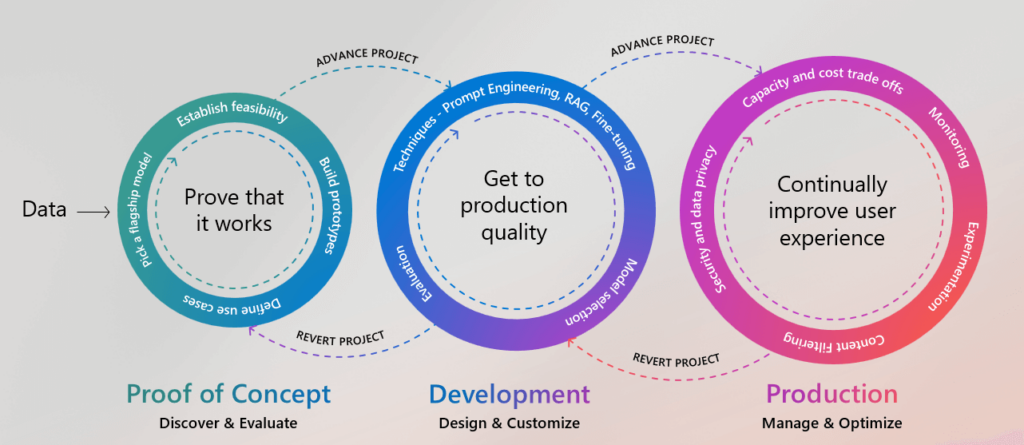
Announcing Azure AI Foundry
In Microsoft Ignite 2024, Microsoft introduced Azure AI Foundry, a cutting-edge platform designed to empower organizations to build, scale, and operationalize artificial intelligence solutions with unmatched ease and efficiency.
Azure AI Foundry is the culmination of years of innovation and customer collaboration, offering a unified experience for creating transformative AI applications.
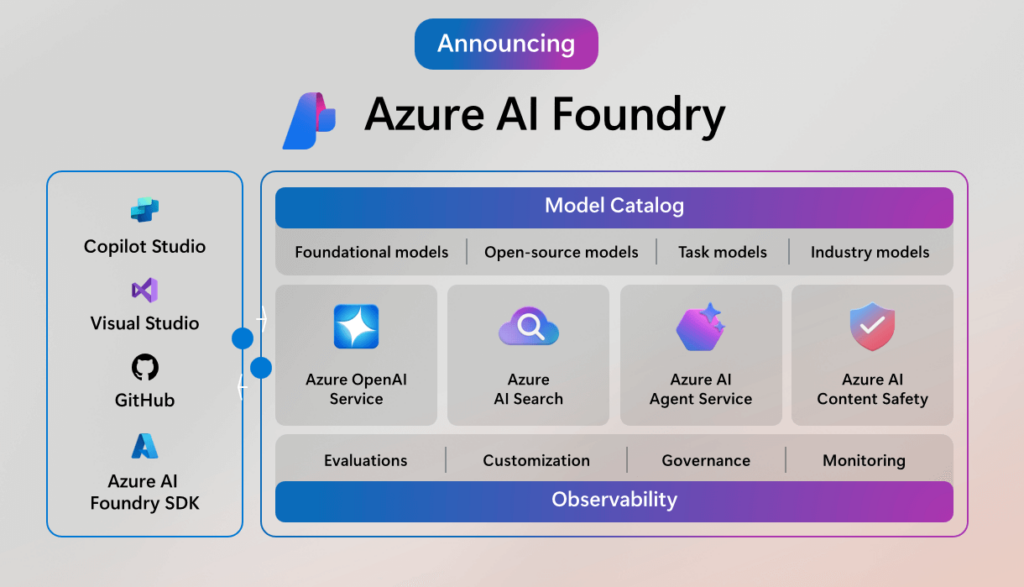
What Is Azure AI Foundry?
Azure AI Foundry is a comprehensive, end-to-end platform that provides everything businesses need to harness the power of AI. From model development and training to deployment and monitoring, Azure AI Foundry is purpose-built to streamline the AI lifecycle while ensuring scalability, security, and compliance.
Key Features of Azure AI Foundry
- Unified AI Development Environment
- Access all tools and resources in one place: data preparation, model training, and deployment.
- Integrates seamlessly with popular IDEs like Visual Studio and GitHub Copilot.
- Prebuilt AI Models and APIs
- Leverage a growing library of prebuilt models for vision, speech, language, and decision-making.
- Easily customize these models to meet specific business needs without requiring deep technical expertise.
- Enterprise-Grade Data Integration
- Connect to diverse data sources, including Azure Synapse Analytics, Databricks, and Power BI, for robust data ingestion and processing.
- Built-in support for hybrid and multi-cloud environments.
- AI-Powered Collaboration
- Foster teamwork with integrated collaboration tools for co-authoring, reviewing, and deploying AI solutions.
- Use GitHub for version control, Azure DevOps for pipeline automation, and Microsoft Teams for seamless communication.
- Accelerated Deployment with Azure Kubernetes Service (AKS)
- Simplify deployment of AI solutions as microservices or APIs using fully managed Kubernetes clusters.
- Achieve reliable scalability and performance with automated load balancing and fault tolerance.
- Responsible AI Framework
- Ensure ethical AI practices with built-in tools for bias detection, interpretability, and explainability.
- Compliance with global regulations, including GDPR, HIPAA, and more.
- Real-Time Monitoring and Optimization
- Leverage Azure Monitor and AI-powered diagnostics to track model performance and operational health.
- Automatically update models based on real-world data through retraining pipelines.
Why Azure AI Foundry?
Azure AI Foundry is designed to meet the evolving demands of modern businesses. Whether you’re developing customer-facing applications, optimizing internal processes, or transforming industries, Azure AI Foundry provides:
- Speed: Accelerate the AI lifecycle with prebuilt components and automated workflows.
- Scalability: Seamlessly grow from proof-of-concept to enterprise-scale solutions.
- Security: Protect sensitive data with Azure’s robust security framework.
- Innovation: Empower teams to experiment and iterate rapidly with cutting-edge AI tools.
Azure AI Foundry SDK for Streamlined Development
The Azure AI Foundry SDK streamlines development by:
- Providing multi-model support.
- Reducing integration complexity with a unified interface.
- Offering pre-built templates for applications such as chatbots and search engines.
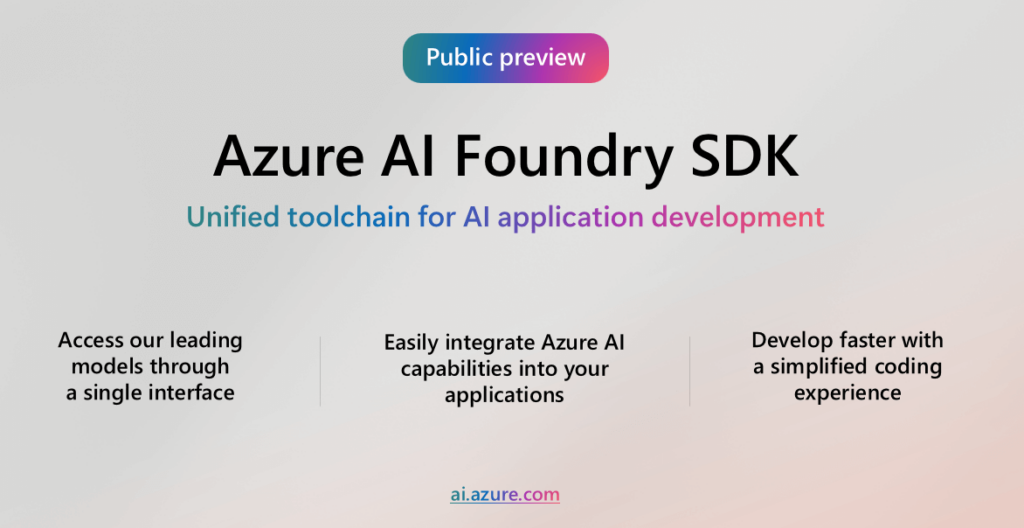
Conclusion:
AI is reshaping the future of application development. From enhancing coding workflows to enabling groundbreaking solutions, tools like Azure AI Foundry and Copilot Studio empower developers to innovate at scale.
The journey to harnessing AI’s transformative potential is now more accessible than ever, paving the way for smarter, more adaptive applications that redefine industries.
